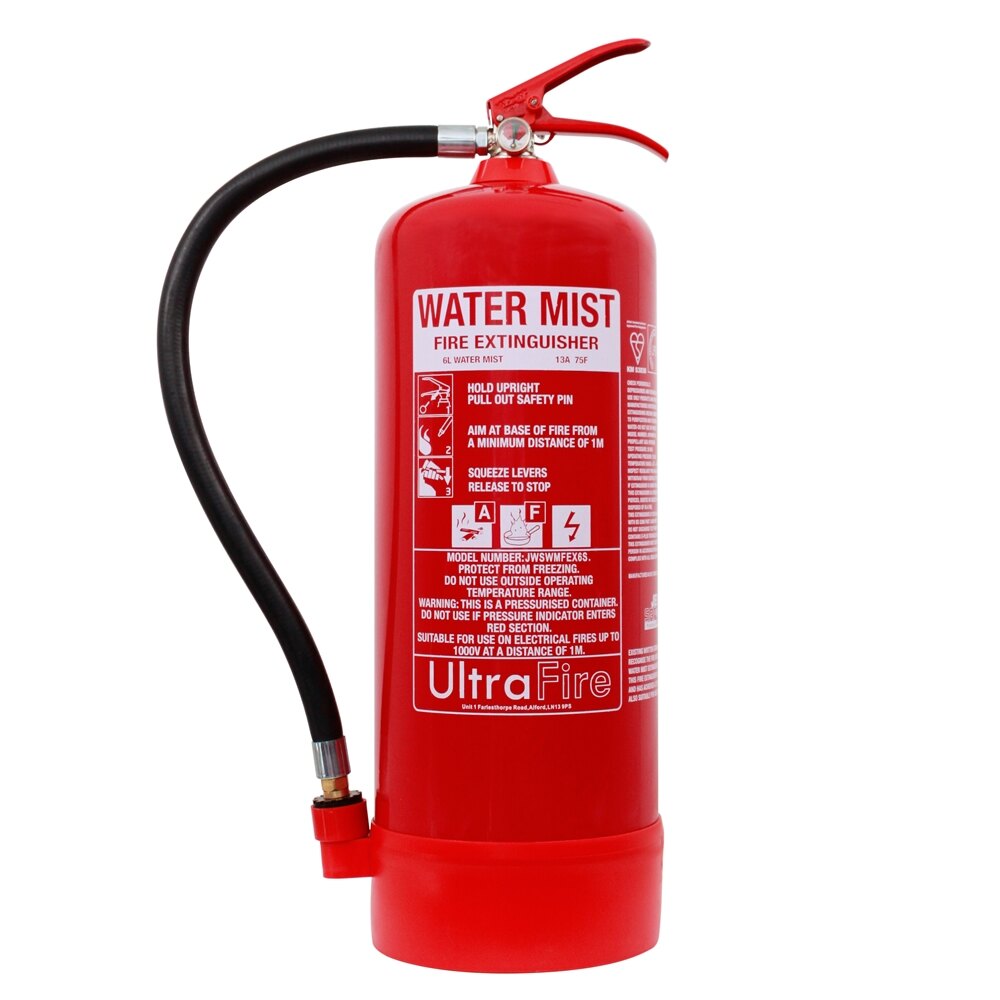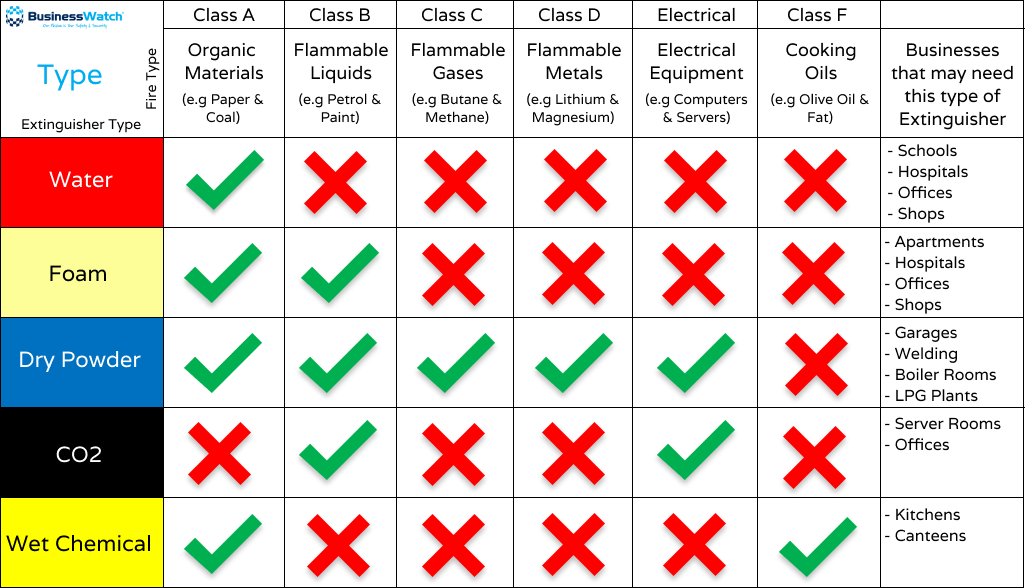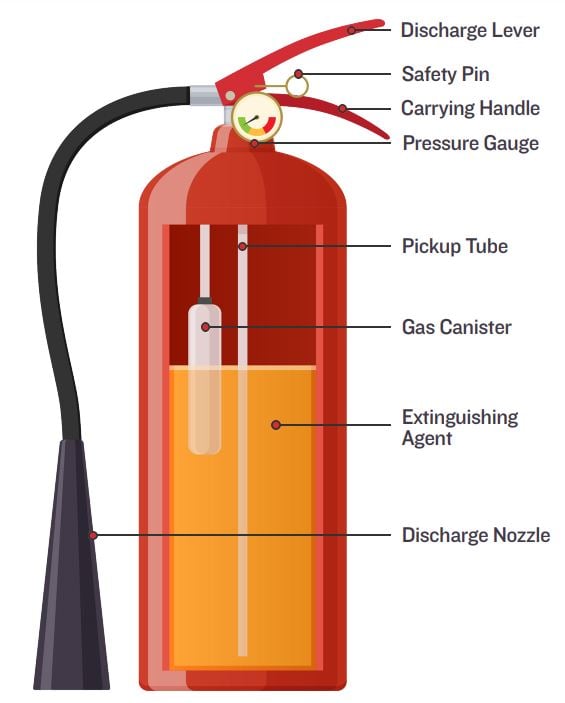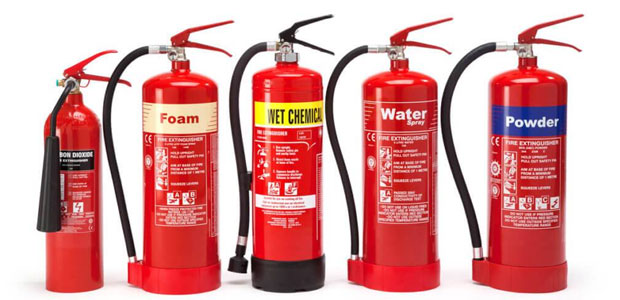class b fire definition
The class contains flammable liquids and gasses. Class B foam on the other hand repels carbon.

Fire Extinguishers Marsden Website
Flammable liquids such as alcohol ether oil gasoline and grease which are best extinguished by smothering.

. Ordinary solid combustibles such as paper wood cloth and some plastics. Most of these liquids have a high carbon content and the compounds in them and are highly combustible. Jw2019 that PFOS and PFAS-based chemicals be used only for essential uses for which there is no suitable alternative such as certain class B fire fighting foams but not for use in fire training exercises.
A division manufactured in incombustible materials that satisfies the following criteria. Knowing about the fire classification of the cladding materials is important. That normally do not leave any embers or residues or very low amounts of residues.
For example propane natural gas gasoline and kerosene fires are types of Class B fires. What Are Class B Fires. Electrical equipment appliances and wiring in which the use or a nonconductive extinguishing agent prevents injury.
They are the combustible materials that can have some contribution to the fire in your building. A it prevents the spread of flames for at least half an hour of the standardised fire test b it is designed so that the average temperature on the unexposed side does not rise more than 140C above the original temperature. Basically class B fires have similar elements as those in class A fires.
Class B fire means a fire involving flammable or combustible liquid flammable gases greases or similar material rubber or plastic material. A fire caused by flammable or combustible liquids and gases oil gasoline. It is easy to contain this type of fire if the source is cut off quickly.
As alluded to above Class B fires are ones in which flammable liquids andor gases become involved. B Class Divisions fire divisions B Class divisions are those divisions formed by bulkheads decks ceilings or linings which comply with the following criteria. In the United States all flammable liquids and gases are Class B.
They have very limited contribution towards the fire. There are four classes of fires. Some plastics are also Class B fire materials.
Class B fire refers to a fire involving flammable liquids such as petroleum gasoline kerosene petrol diesel octane etc paint alcohol solvent oil and tar etc. However they can cause a lot of damage within a short time considering the fact that they burn. When mixed with water it forms a film that hovers over a spill or burning liquid sealing the flammable vapors.
So a class B fire is very dangerous as it is the burning of flammable liquids. For example for it to burn there must be oxygen fuel heat and a prolonged chemical reaction. A They are to be so constructed as to be capable of preventing the passage of flame to the end of the first half hour of the standard fire test.
Class B Fire Division. 2012 Farlex Inc. It helps the water penetrate the burning material to quickly suppress the fire and prevent rekindles.
In this blog read on to learn just what exactly constitutes a Class B fire what types of extinguishers qualify as Class B fire extinguishers and to better understand what a Class B fire extinguisher can be used for. Because ordinary combustibles are so common in house fires authorities usually recommend that you get a fire extinguisher that includes at least an AB rating Most common fire extinguishers are class ABC. They can also involve gasses like propane and butane.
In fire classes a Class B fire is a fire in flammable liquids or flammable gases petroleum greases tars oils oil-based paints solvents lacquers or alcohols. Examples of flammable liquids include petrol oil paraffin alcohol and certain paints. In the case of a spill a Class B foam blanket prevents vapor production and.
Blanketing with O2-deprivation eg CO2 dry chemical or foam. FEMAL states that Class B fires are often fueled by materials such as gasoline petroleum gasses tars oils oil-based paints solvents and alcohols. B Fire Rating Cladding Classification.
Foam extinguishers work well not only on class A fires but especially on fires involving flammable liquids industrial lubricants fuels paints generally known as class B fires. They can ignite by heating them up to extreme temperatures or with a simple spark. The use of lighter fluid on a charcoal grill for example creates a Class B fire.
These are the no flashover materials. Flammable Liquids and Gases. Class B fire means a fire that has as its fuel flammable liquids gases or greases.

What Do The A B C Ratings Mean On Fire Extinguishers

Different Types Of Fire Extinguishers Used On Ships

Types Of Fires Kidde Fire Safety

Fire Extinguisher Types Colour Codes Classes

What Are The 5 Different Classes Of Fires Vanguard

Abcs Of Fire Extinguishers Fire Prevention Services The University Of Texas At Austin

The Five Classes Of Fires And The Fire Extinguishers That Stop Them Strike First Usa

What Are The Different Types Of Fire Extinguishers Uk Businesswatch

The Different Types Of Fires Classes Prevention Reaction

The 6 Types And Classes Of Fire And How To Attack Them Haspod

Guide To Fire Extinguisher Sizes Types Ratings

The Five Classes Of Fires And The Fire Extinguishers That Stop Them Strike First Usa

The 6 Types And Classes Of Fire And How To Attack Them Haspod

The Different Types Of Fires Classes Prevention Reaction

The Different Types Of Fires Classes Prevention Reaction

Classification Of Fire And Hazard Types As Per Nfpa Enggcyclopedia

Fire Extinguisher Meaning Classes Types Selection Use Inspection With Pdf What Is Piping

The Abcs Ds And Ks Of Fire Extinguishers Occupational Health Safety